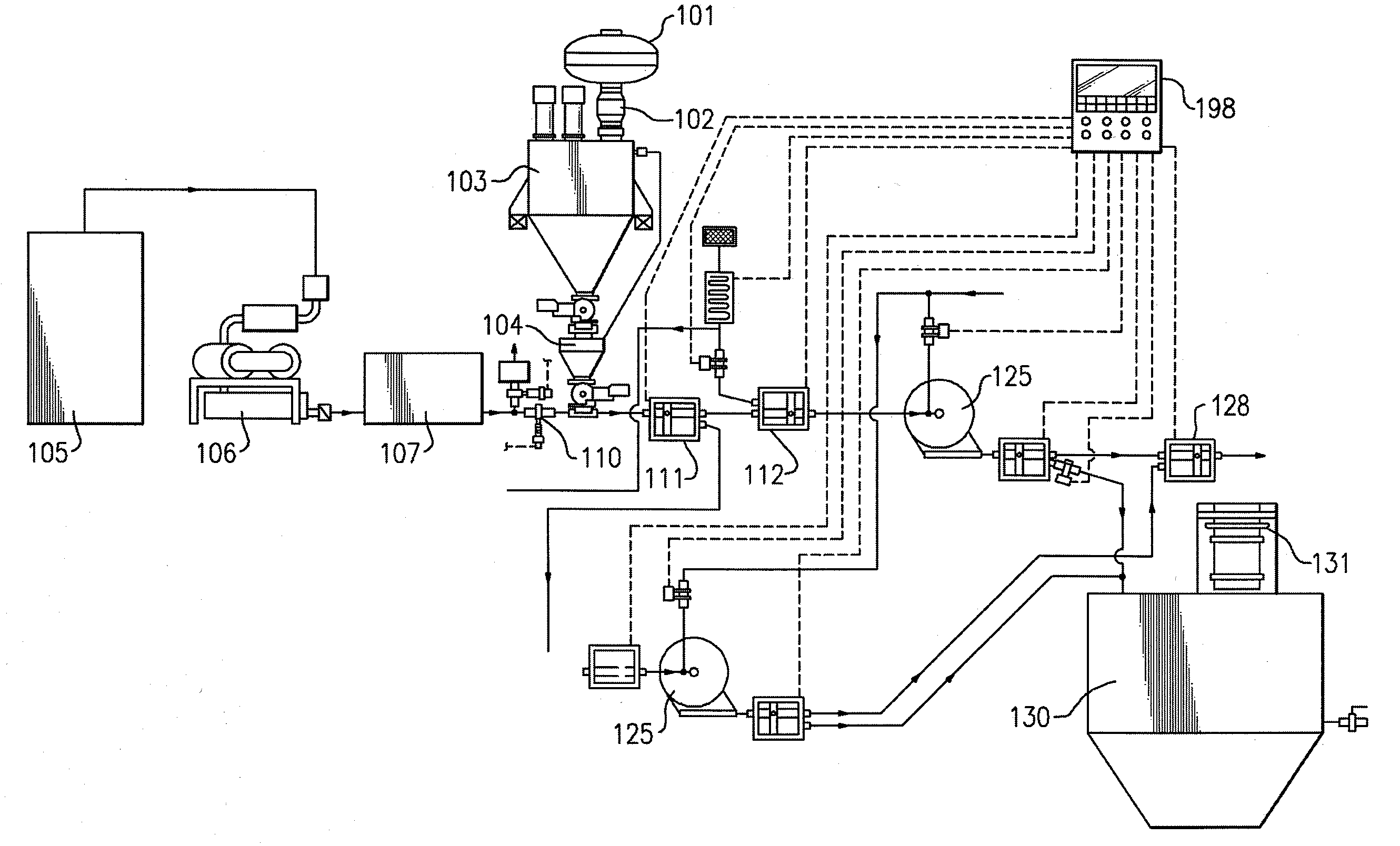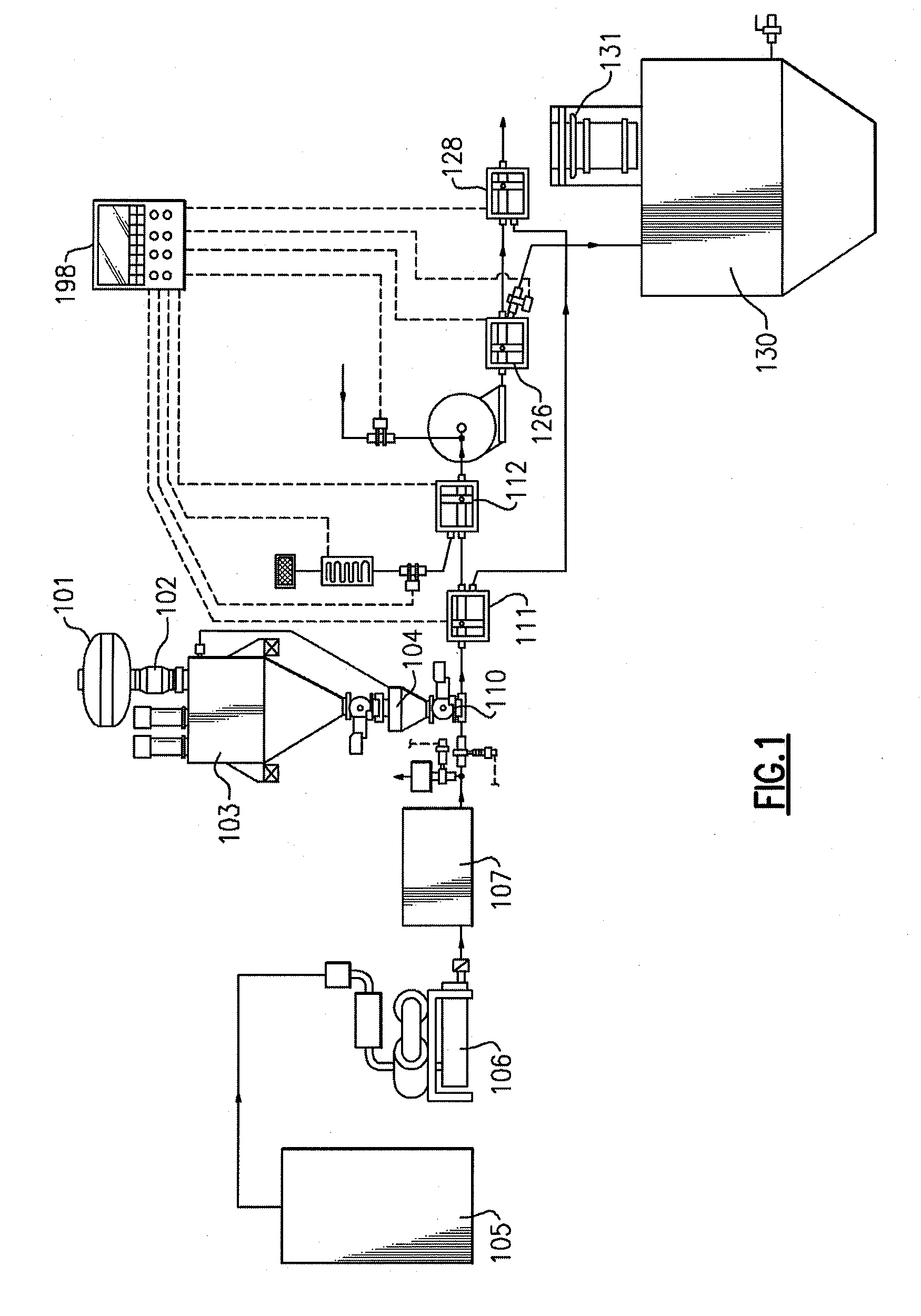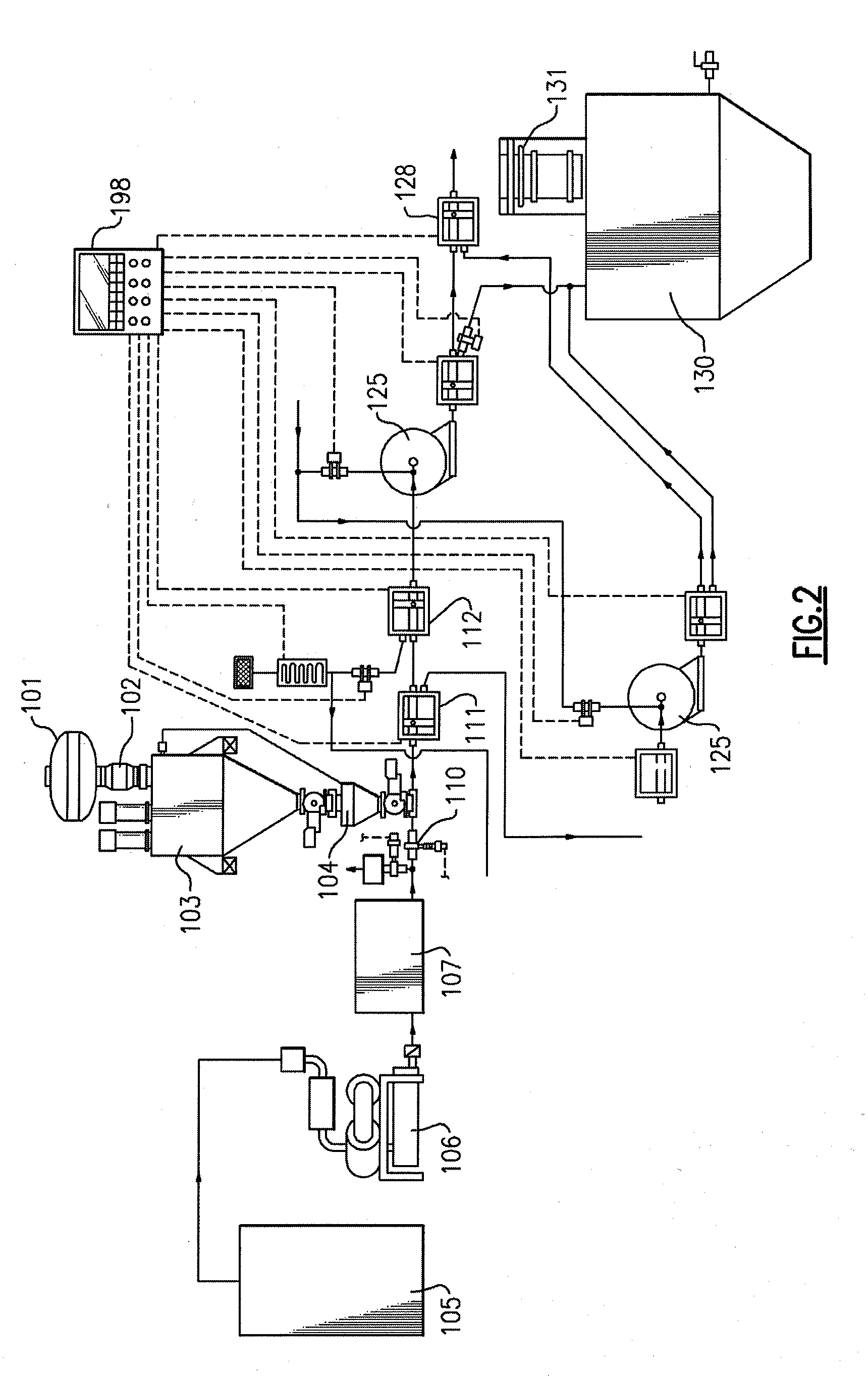In-line milling system
a milling system and milling technology, applied in the field of products, can solve the problems of untreated emissions from the facility, unsuitable cleaning method, and unwanted agglomeration of sorbent materials in the system, and achieve the effect of minimizing the downtime required for cleaning, high volume throughput, and high volume of material being processed
- Summary
- Abstract
- Description
- Claims
- Application Information
AI Technical Summary
Benefits of technology
Problems solved by technology
Method used
Image
Examples
Embodiment Construction
[0032]Reference will now be made in detail to the present preferred embodiments of the invention, wherein like reference numerals refer to like components, examples of which are illustrated in the accompanying drawings.
[0033]Turning to FIG. 1, a schematic view that illustrates an in-line system 100 for milling sorbent material to be used in a pneumatic conveying system according to a first embodiment of the present invention is shown. Sorbent material (not shown) enters system 100 via scalping screener 101, passes through metal separator 102 into loss-in-weight feeder 103. From loss-in-weight feeder 103, sorbent material passes through transitional vent hopper 104 into a two-way diverter assembly 110. A conditioned air stream (not shown) is provided to two-way diverter assembly 110 via dryer / chiller 105, PD blower 106, and air to air heat exchanger 107.
[0034]Within two-way diverter assembly 110, “A” diverter 111 allows sorbent material to flow toward mill 125, or diverts it as a byp...
PUM
| Property | Measurement | Unit |
|---|---|---|
| pressure | aaaaa | aaaaa |
| particle diameter | aaaaa | aaaaa |
| volume | aaaaa | aaaaa |
Abstract
Description
Claims
Application Information
 Login to View More
Login to View More - R&D
- Intellectual Property
- Life Sciences
- Materials
- Tech Scout
- Unparalleled Data Quality
- Higher Quality Content
- 60% Fewer Hallucinations
Browse by: Latest US Patents, China's latest patents, Technical Efficacy Thesaurus, Application Domain, Technology Topic, Popular Technical Reports.
© 2025 PatSnap. All rights reserved.Legal|Privacy policy|Modern Slavery Act Transparency Statement|Sitemap|About US| Contact US: help@patsnap.com



